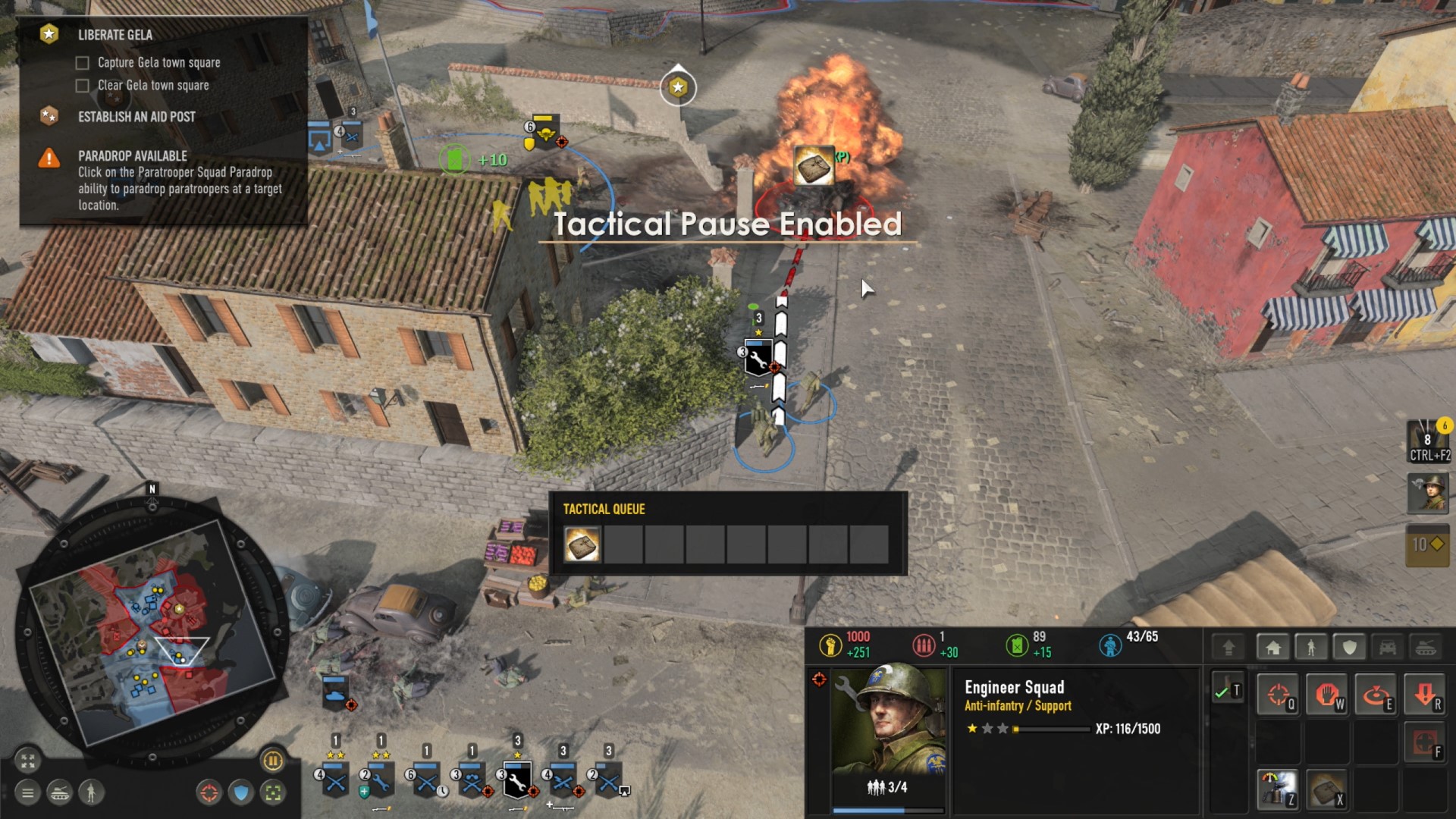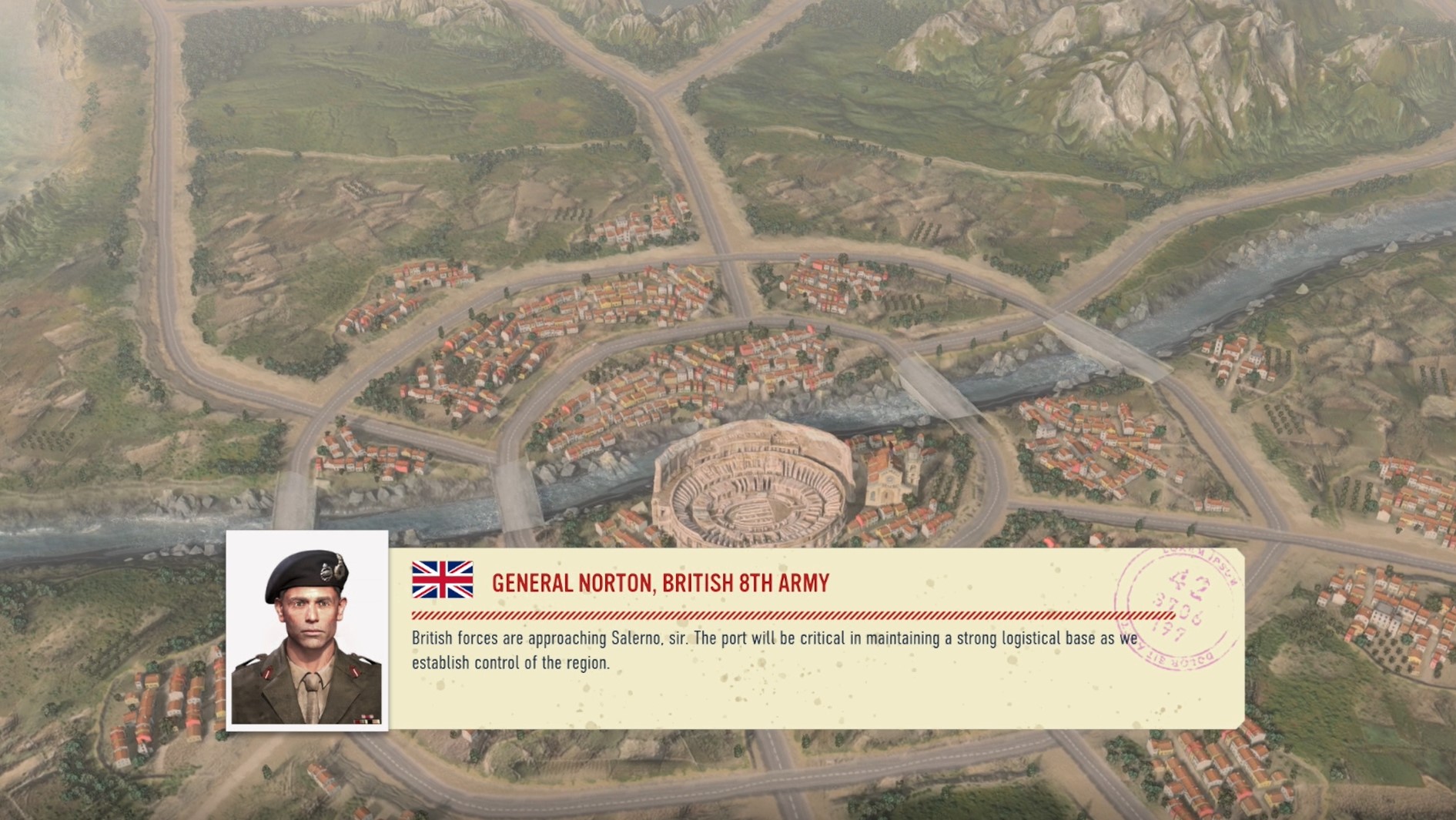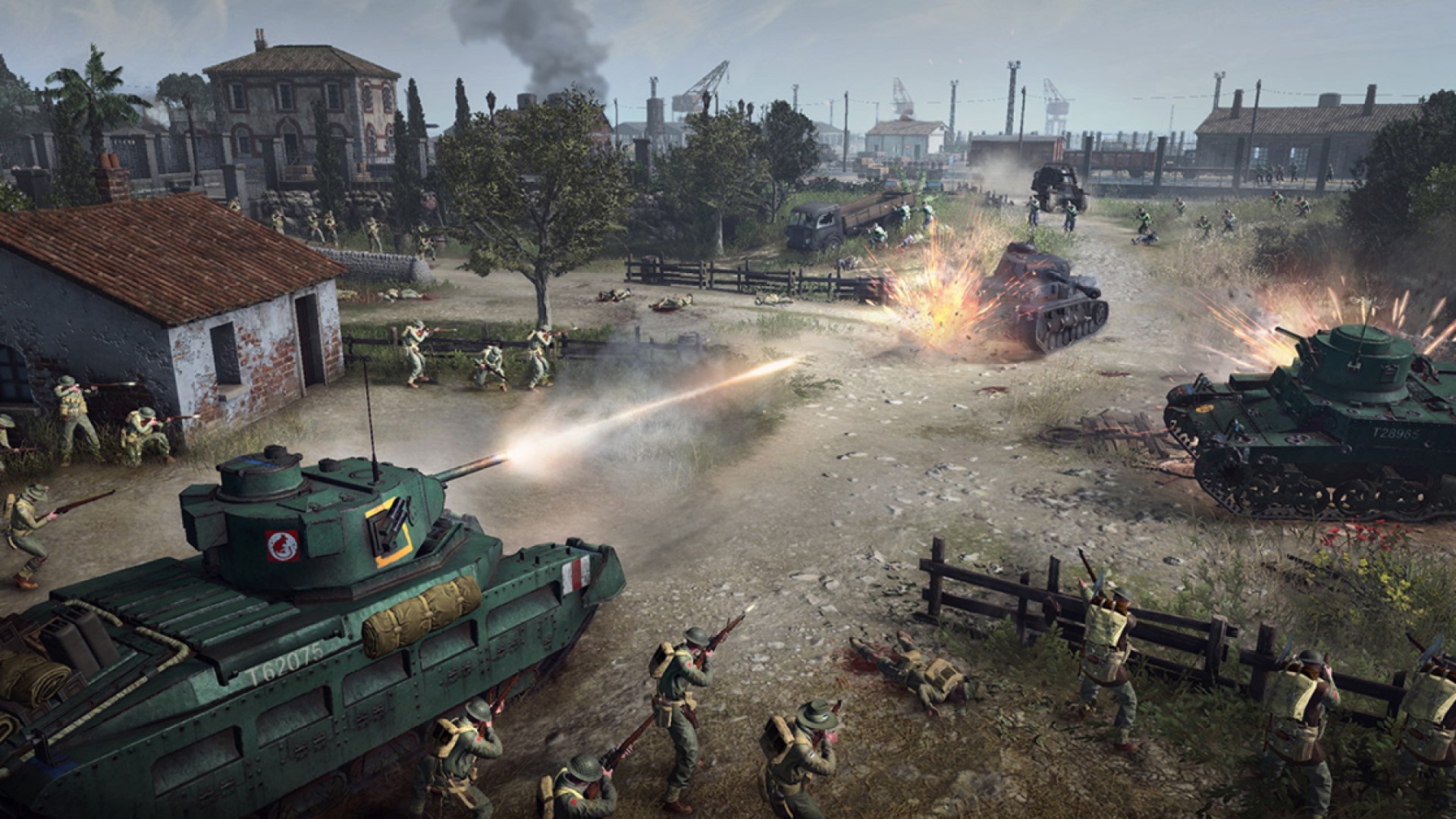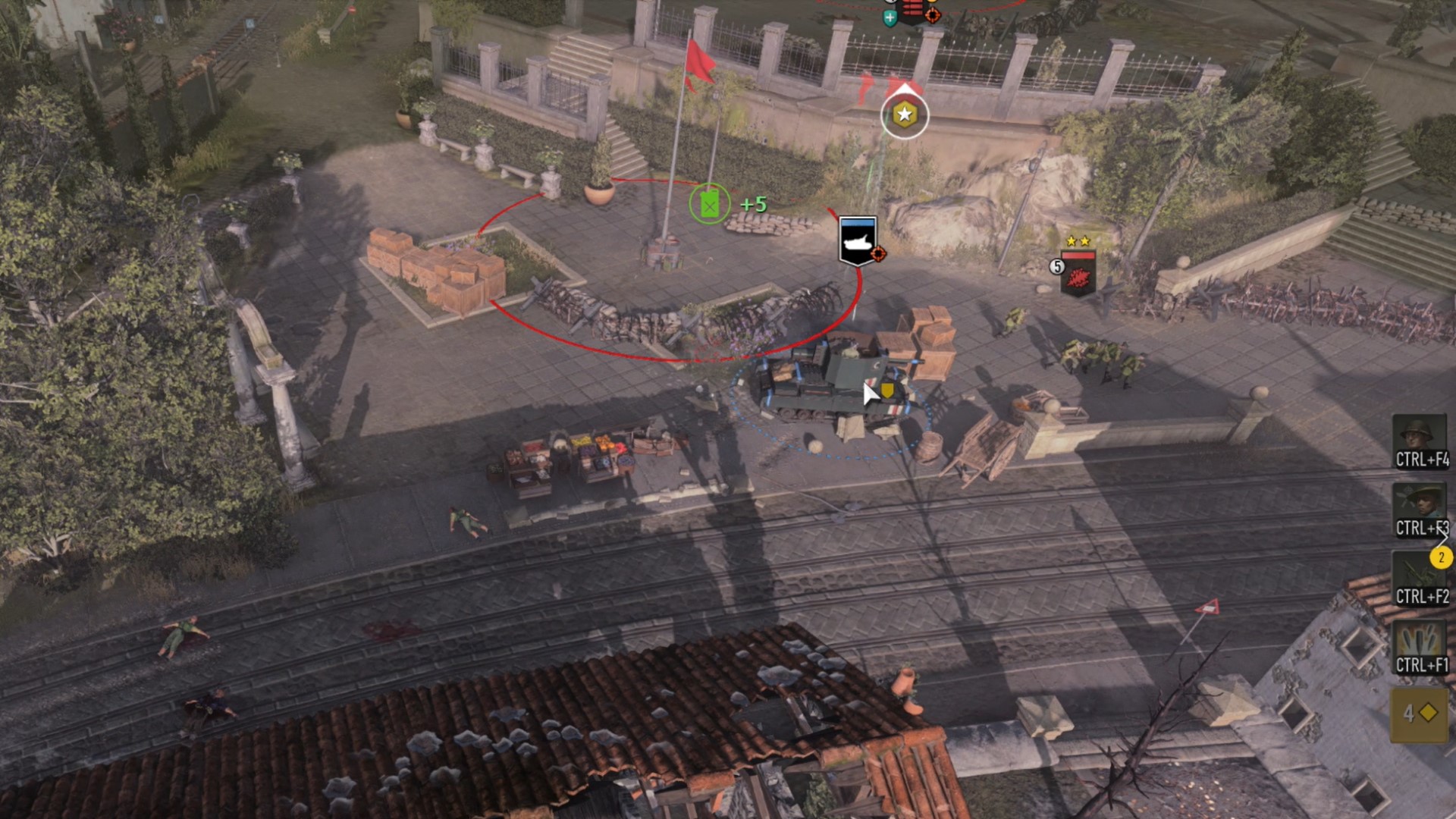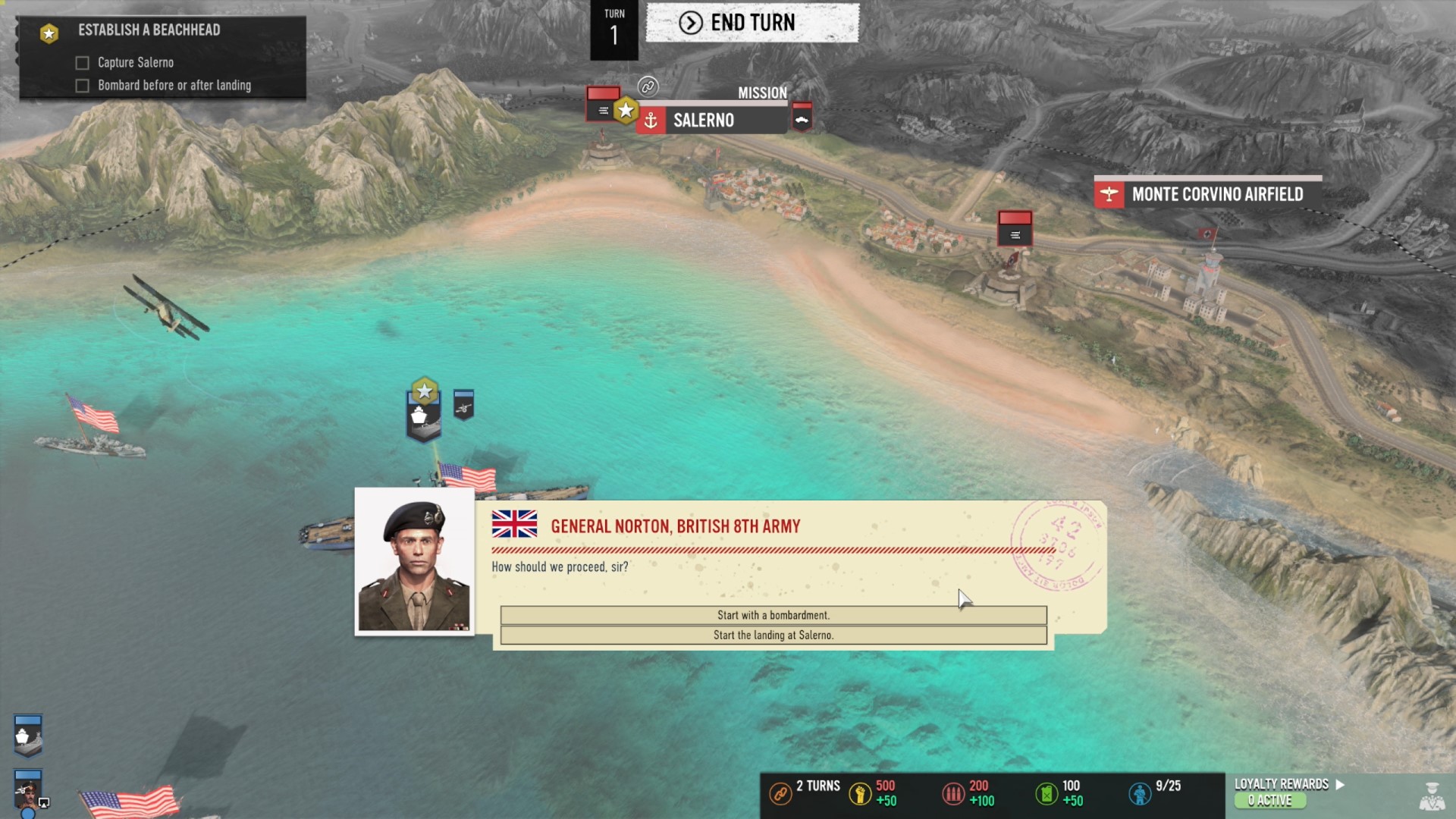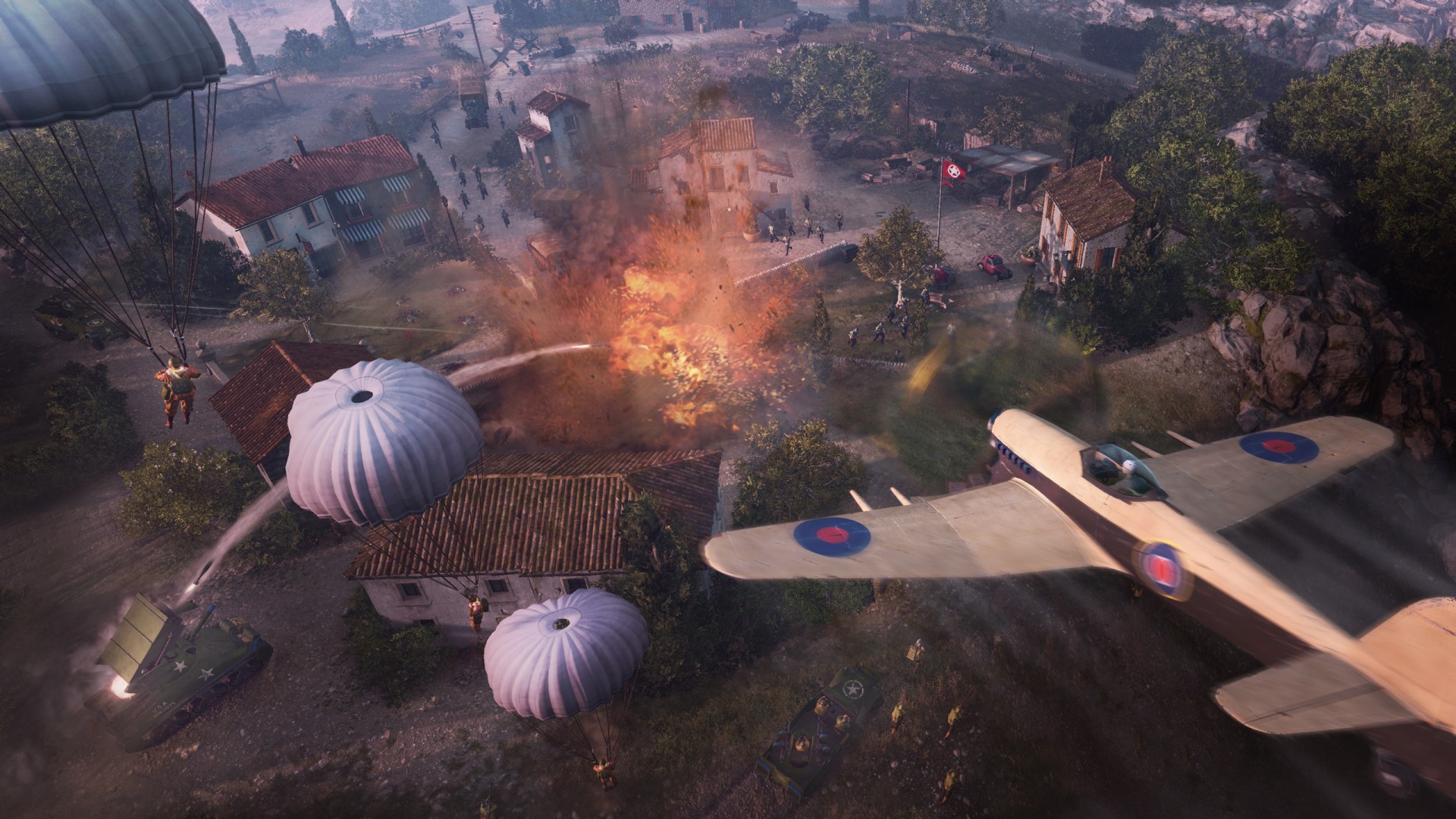We recently spoke to Company of Heroes 3 executive producer Steve Mele about the game’s main innovations, its approach to storytelling, and how it aims to appeal to as many players as possible, while keeping its core audience on board.
Company of Heroes 3 brings in new features like a tactical pause system, a Total War-esque campaign map, and modding – the WW2 game also boasts two campaigns, four factions and 120 playable units – a considerable step up on what CoH2 offered on launch. But despite the changes Relic has made, Mele assures that the game is sticking to its tried and true formula: “it’s still Company of Heroes,” he assures.
The Company of Heroes 3 release date is February 23, 2023. After getting to grips with a recent build of the game at a preview event (check out our Company of Heroes 3 preview for our thoughts) we sat down with Mele for a chat.
Wargamer: What’s your favourite feature within Company of Heroes 3, the biggest area of improvement between this and the previous game?
Steve Mele: Okay. I’m going to start with something that I have a ton of fun with, which is not the biggest or the most important feature. It’s just something I think is a ton of fun, which is the restoration vehicle.
So the restoration vehicle, there was a period of time when I was playing as the DAC and you could take that vehicle out, and you could restore vehicles on the battlefield that were destroyed. And then even the enemy units, like a Sherman, like you’re playing as the Germans and there’s a Sherman tank out there, you grab it, you restore it, and you can send it back at them. So it was a ton of fun. Not necessarily a good strat at the time. But that was one of my favourite things, It was almost like a meme strategy. But, so that was fun.
But if you’re talking about game-changing features for the interview (laughs) then tactical pause has been that for us, for sure. So, I’m a gamer, I’ve worked on the game myself, I’m good at the game. But even when tactical pause started being introduced as a feature, we started using it and it really just helps you – you know – if the designers changed or brought in a new unit, or as a new player you play, you’re like, “oh, I don’t know what this unit does, what does it do?” You can pause the game, you have a moment to read what its strengths are, what its weaknesses are. Or a tech tree – you’re trying to read through the tech tree because the designers changed it or you’re new to the game – you can read through the tech tree and go: okay, yeah, I’ll make this choice, or that choice.
So tactical pause, I feel it’s a huge changer of the game – and it’s new for the game – that just, I feel, makes a huge difference.
Wargamer: Company of Heroes 3 is one of the more colourful World War games I’ve ever seen – it’s not just brown and grey. Was that a conscious effort?
Steve Mele: Absolutely, and I’m glad you noticed it. World War II, in movies and games, like you said, there’s a certain feel and a look. But something that players were asking for was that variety. Variety was a priority.
So, what does variety mean? It means the landscapes that you’re in. And for us, it also meant the visuals too, like the Mediterranean theatre offers that. We’ve got that variety of Italy, in the vistas of the hills, and the water, and the towns. And then in North Africa, you have the variety there.
Our art director really had this concept of Paradise Lost, where you’ve got these beautiful locations that are tropical or colourful, and then as the war moves through it, it tears it apart and makes it scarred and damaged and destroyed. And so there’s visual storytelling within our missions as well, that you have these beautiful vistas that deteriorate and destroy over time.
Wargamer: Do you think the game will appeal more to long standing players or to new players?
Steve Mele: Okay, I’m ready to answer that one. It was really important to us that we capture the essence of Company of Heroes, right? So if you are a long-time Company of Heroes player, the most important thing we were doing is we want you to feel like this is another Company of Heroes game within the franchise that just follows that excellent formula that we’ve always had.
Some of the people that we brought onto our team are from the community, are high ranking players, and this is exactly what we want to feel: is that it’s still Company of Heroes, that the formula of combined arms, cover, flanking – all of that is critically important to us.
But then we also want to bring in as many players as possible. So we’re offering new things, like the dynamic campaign map for a higher level strategic experience, tactical pause to give you an opportunity to learn the mechanics and not be challenged by some of the complexities that we have. So, yes, so there’s a little bit of both, but the priority was ensuring we captured that core.
Wargamer: How much depth will there be in the turn based campaign element of the game?
Steve Mele: That is new to the Company of Heroes experience for us. And so, you know, the core experience is the RTS. But that new layer that we’ve added on, there is depth to it.
You need to focus on supply lines, and the impact that supply has on the enemies and on yourself. So as you advance, collecting more supply, it will definitely impact your units’ ability: how far they can go, how long they can spend in enemy territory. So there’s complexity there.
Then there’s also complexity in what we call mission affectors. I don’t know if that’s the official term in the game. But basically, when you go into missions, what you’re doing on the campaign map has an effect from what’s surrounding you. So if you bring in other companies nearby, or whatever attachments you have attached to them, will impact what’s happening in the mission RTS as well. So part of the strategy is deciding around that.
And then there is how you move up the peninsula, and like, are you going naval? So do you take the navy up and bombard them? Are you going to be more airforce and bringing up planes, or partisans, and using their abilities to impact the field there. And then obviously, your resources and managing your resources amongst all of that.
So positioning, direction, you know, what’s your strategy and how you’re tackling all that, all kind of weigh into it. I didn’t even mention the commanders who also each have a tech tree that you’re moving along, that influences what’s happening on the field.
Wargamer: Where do you think this game lies on a scale between ‘simulationist’ and ‘arcadey’?
Steve Mele: We talked about this a lot. We talked about authenticity, and we talked about how important it was to be authentic to the time, the place, and that players can really immerse themselves in the fantasy of commanding an army during World War Two.
So that authenticity meant that we had real vehicles, real locations, real experiences, real tactics, but it wasn’t about realism, or simulation, or accuracy. We weren’t a slave to every last realistic element.
Because when we’re tuning the gameplay, sometimes you tune gameplay to be outside of realistic so that the gameplay feels right. Because there’ll be people who say, you know: ‘That upgrade on that vehicle did not occur at this time, at this place’.
Whereas we’re like: ‘We need an upgrade, we need something to work here. And this would make sense.’ And they may not be 100% accurate to that exact moment in time. But there’s room for us to play there. And you know: ‘This gun shouldn’t shoot that far. It should shoot like this.’ And we’re like, ‘Yeah, but we need a unit to, for gameplay reasons, to be able to reach that point.’ Right?
So I wouldn’t say we’re arcadey by no stretch. It’s authentic, so that you’re feeling, you’re immersed in the experience and immersed in the place. But there are obviously some, you know, adjustments there.
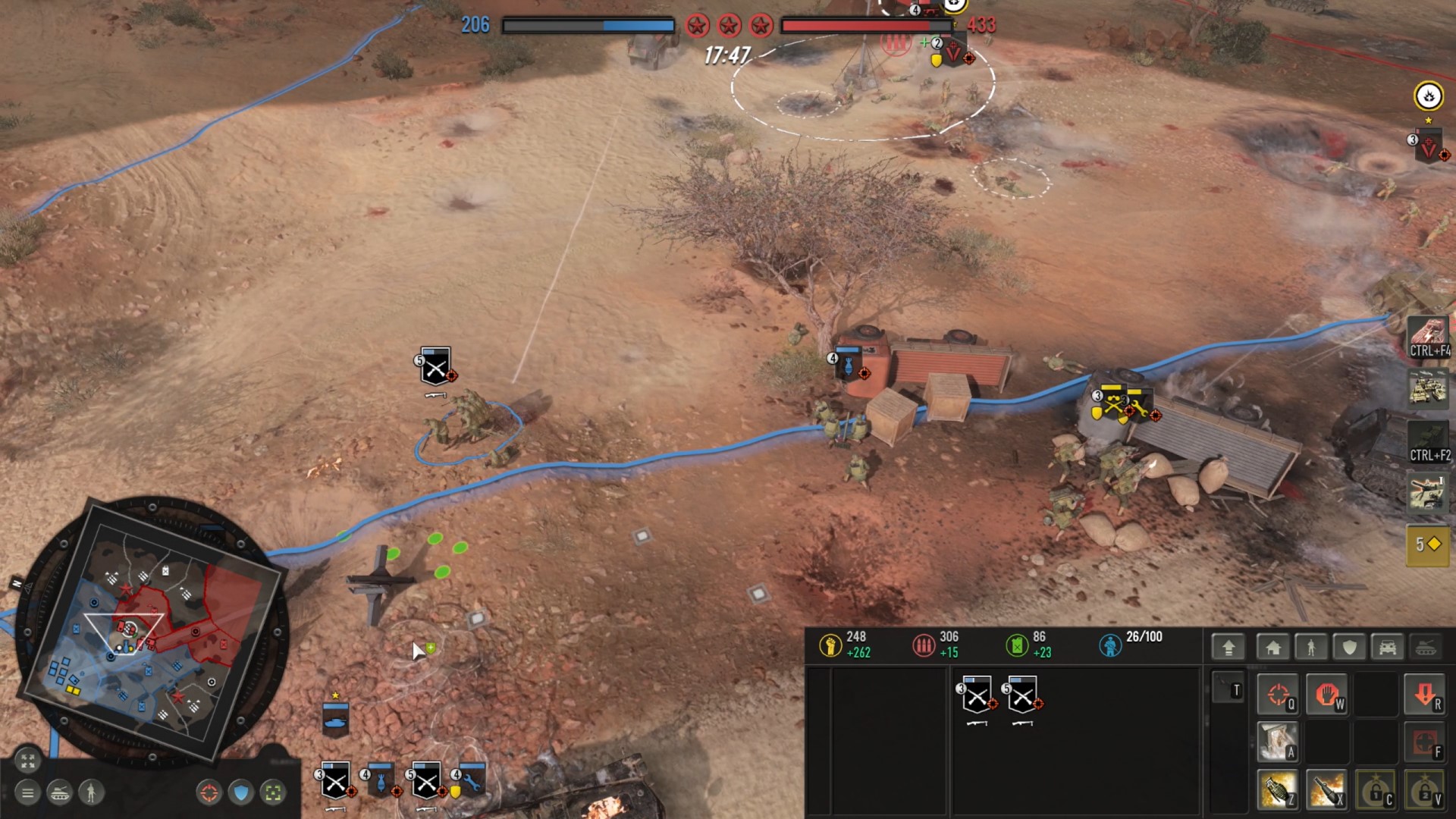
Wargamer: There’s a story running in the North Africa campaign about the impact of war. That seems very unusual, particularly for an RTS, and I wanted to ask why that was something you chose to focus on.
Steve Mele: We are really proud of the story we are telling there. This was a difficult part of all our history. And telling these stories is important, but how we tell these stories as well is important. So, for us, it was telling stories about the war from a perspective of the impact on the people, right?
And so in the past, it was stories about the soldiers themselves and the impact on them as individuals. But we felt this was an important story to tell. And especially when we were taking on, you know, playing as the DAC. We thought it was an important perspective to bring to the table for this piece of history that we’re telling. And so we worked with cultural consultants to just help us craft that story and ensure we’re telling it in a respectful way, a fair way.
So yeah fascinating journey we went on to tell the story, but we’re super excited by it. Yeah, we’re totally, very proud of it. And excited for players to see it. And I do think it’s something new, and I think people are going to be impressed with our take on this.
Wargamer: It seems you’re aiming for a lot more variety in CoH 3. So what’s replayability like?
Steve Mele: So the theatre – I’ll start with that one, because we kind of covered it – the theatre provides variety, in that you have the variety of the locations, you have Italy with their urban, coastal, countryside, hills – hilly regions, and not hilly regions. So Italy provides you that variety, then you have North Africa with the wide open spaces, and some buildings, and then some rural areas. And so you have that variety.
Then we have four factions at launch, which again, provides you variety. So all those units that you saw, there’s 120 units. So this is the biggest Company of Heroes. And there’s a ton of variety in the content. And then we also want to give players the choice to play Company of Heroes the way they want to play. So if you’re a multiplayer player, go there, you know, skirmish go there, if you want, you know, we have players who just play the skirmish against the AI because that’s what they love. And if you want the single player, we’ve got two experiences there. So there’s lots of variety and it gives players a chance to play the way they want to play.
Wargamer: One last thing – how much will change between now and when Company of Heroes 3 releases?
Steve Mele: When I look at you all playing the game there, that build is probably, maybe it’s a month old, and not that there’s anything wrong with that. It’s a month old, because we lock it down that way so it’s ready for you. But I do know that there’s changes since then.
But the changes that we’re focused on right now are – it’s polish. Like, I saw bugs there that we fixed already. I know that there’s some polishing of elements, like icons and some odd elements, so yeah, right now the game that you’re playing is very much the game.
But this is that polish that we’re talking about, which is just fixing those bugs. Getting those last visual elements in, tuning is another one, like how long it takes to kill an enemy unit, how difficult one of the missions was, and yeah, those are things that we’re trying to adjust right now.
Source: Wargamer



